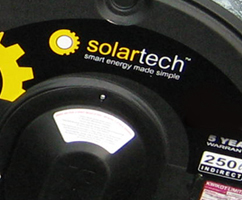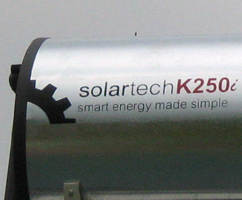October 6th, 2009
The realities of an energy constrained future (James McCallum MD Solartech)
Electricity price hikes of between 30 percent and 60 percent a year are on the cards for the next five years, according to the National Energy Regulator.
Nersa confirmed on Monday that Eskom had submitted an application for a tariff increase which would become effective in April, but said the percentage increase asked for could not yet be made public.
However, in a document published on September 17, Nersa said Eskom's 31.3 percent increase in July might be followed by "similarly high nominal prices increase in the short-term".
In the document, Eskom Interim Price Increase Application 2009, Nersa calculates Eskom's possible future price paths using the 20009/10 costs information.
Indications were that there "could be increasing prices between 30 percent per annum and 60 percent per annum in nominal terms".
The upper limit of price hikes could stabilise in 2012/13 at "just more than 80c/kWh" in Tuesday's values.
The lower limit - "even for the best conditions simulated"- could be above 60c/kWh by 2013/14.
These projections were dependent on the assumptions used to calculate them.
Nersa spokesperson Charles Hlebela on Monday confirmed on Monday they had received an application from Eskom for a price increase.
But, "we are not in a position to say what percentage increase Eskom has asked for".
Unconfirmed reports are that the utility asked for a 40 percent tariff hike from April.
Eskom spokesperson Andrew Etzinger said they submitted the tariff increase to Nersa, the Treasury and to the SA Local Government Association (Salga).
"Salga has 40 days to comment before we submit our final application to Nersa.
"Only then will the amount be made public," said Etzinger.
Energy consultant Mark Pickering said reports of a 40 percent price hike fell within Nersa's scenarios for future price hikes.
South Africa's electricity prices were among the cheapest in the world and even if prices were doubled, it would remain among the cheapest.
This was because:
- Power stations had been built close to coal mines, and most of the cost of coal was in transportation;
- Power stations in South Africa were so old they were fully depreciated; and
- South Africa's environmental standards for producing electricity were lower than most industrialised countries, which reduced costs.
South Africa was also one of the most energy inefficient countries in the world, with one of the highest per capita carbon footprints.
Pickering said there had to be a clear commitment from Eskom to buying renewable energy before the industry would take off.
"Without this they will simply default to the lowest option, which is coal."
and this can not be the option..




